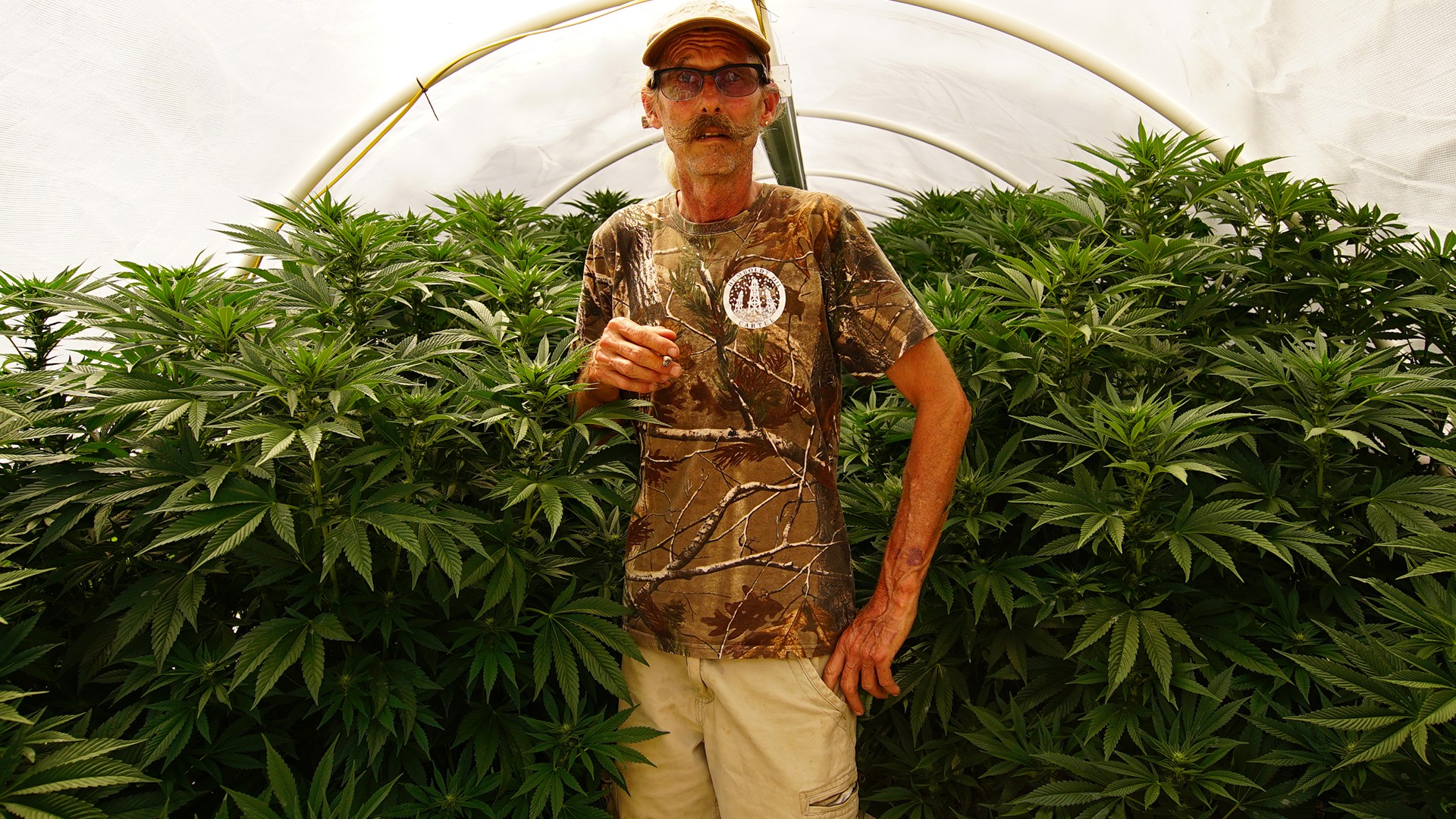Andrew from Willits, California has been growing cannabis since he was ten years old. "This is my life. The world of weed has been good to me," he said. "Things are changing faster than people can keep up with. I see a depression on the horizon for the Emerald Triangle. I will miss the way things used to be."

Nate explained why he grows medical marijuana: “My mom has rheumatoid arthritis, Lyme's disease, and fibromyalgia, and they had her on Oxycontin, Roxicodone, and Xanax. For years and years I had to watch my mom deteriorate, so I started getting her to smoke weed. Everyone sees the difference. When she’s smoking cannabis and she’s taking her oil, she’s cool. I feel like everyone should have access to marijuana because it is a healing plant.”
Wade Laughter champions a strain of cannabis high in CBD content called “Harlequin” for its healing properties.
Denise from Romania trims weed in her home garage near Nevada City.
The world of weed exists in a weird realm populated by characters living out different shades of the American dream.
They typically hang-dry California cannabis for up to a week before trimmers begin manicuring the buds.
Many work up to 16 hours a day, seven days a week through the autumn peak season to save up enough money to travel elsewhere during winter months.
California’s Emerald Triangle is home to some of the most celebrated weed in the world.
After dropping out of college and working as a stripper, 23-year-old Sarah White left Colorado to work as a farmhand in Nevada City. “My goal was to eventually have my own property out here but with the way legalization is going I’m not sure if that’s realistic anymore. Prices are dropping and everything is becoming so commercialized. I like the hands on feel of working on a small farm where it’s like a family and a community.”
A cannabis crop ready for harvest overlooks devastation from wildfires in Calaveras County.
Downtown Garberville is filled with newly arrived “trimmigants” from all over the world looking for work.